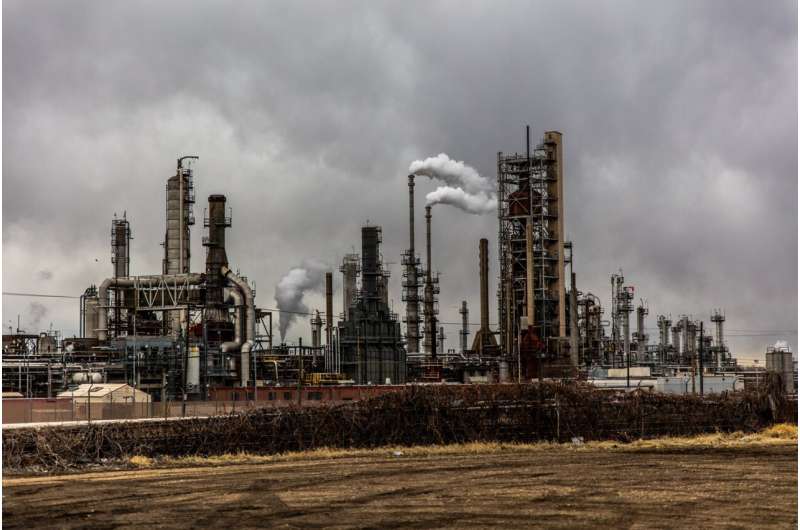
In 2014, hundreds of Angelenos gathered downtown to watch more than 2,000 trucks pour concrete into a vast hole. During that event, Los Angeles set a world record: 80 million pounds of concrete were laid down over 18 straight hours to form the foundation for the Wilshire Grand Center, which now towers 73 stories over the city.
This material that has been used for thousands of years, that formed the Colosseum and the Pantheon, has become indispensable. It's the most-consumed human-made material on Earth. It's also one of society's biggest sources of greenhouse gas emissions.
Globally, manufacturing of cement—which binds together sand and rock to form concrete—emits 8% of the carbon dioxide pollution in the atmosphere, contributing to the climate change that's causing wildfires, hurricanes and record heat waves. Cement and concrete manufacturing emits as much carbon dioxide as India.
We can't stop building the homes, factories and roads we rely on, but we can and should stop cement's unchecked emissions. Fortunately, new technologies are beginning to show the way forward, even promising that cement production could one day pull carbon from the atmosphere and become part of the solution to global warming.
In cement manufacturing, limestone and other ingredients are added to a kiln. In the standard process today, fossil fuels are burned to heat the kiln, emitting carbon dioxide. The heat breaks down the limestone, freeing carbon trapped inside the rock, emitting more carbon dioxide.
This makes cement a massive source of the greenhouse gas emissions accelerating climate change—and its use is projected to keep increasing through 2050, driven by growing global population, urbanization, wealth and infrastructure needs.
Here in California, we produce more cement than any other state except Texas. In 2022, our state's cement plants emitted more than 9 million metric tons of carbon dioxide, equivalent to the emissions from 2 million cars and SUVs or 22 gas-fired power plants. This makes our state an excellent laboratory in which to find solutions.
Electrically heated cement kilns and limestone alternatives could drastically cut climate pollution. For instance, one Oakland-based company is commercializing cement made from carbon-free calcium silicate rock, which emits no carbon dioxide when processed in a kiln.
By combining clean heat with carbon-free minerals or equipment to capture the carbon emissions from breaking down limestone, cement-making could become carbon neutral by 2045. That's an excellent first step, but the innovations happening today could take us beyond carbon neutral.
After concrete is made, it gradually absorbs carbon dioxide from the atmosphere in a process called carbonation. With the ingredients and techniques common today, making cement produces more emissions than the material can later absorb, so every new ton of cement worsens climate change. But if cement kilns are heated with clean electricity and the emissions from breaking down minerals are avoided or stored underground, then the simple act of pouring concrete would remove carbon pollution from the air. New construction would help repair our climate.
This won't happen on its own. Governments will have to implement smart policies to incentivize clean cement manufacturing. California is taking the lead, but the race isn't over.
2024 Los Angeles Times. Distributed by Tribune Content Agency, LLC.
Citation: Commentary: Cement is a big part of the carbon problem. How to make it part of the solution (2024, February 22) retrieved 22 February 2024 from https://techxplore.com/news/2024-02-commentary-cement-big-carbon-problem.html
This document is subject to copyright. Apart from any fair dealing for the purpose of private study or research, no part may be reproduced without the written permission. The content is provided for information purposes only.
